I bought an e-bike!
New bike lanes add safety and make a big difference for me and other cyclists
I bought an electric bike Wednesday, a brand new bike. I hadn’t bought a bike of any sort since the age of Betamax videos and way before anybody had a cell phone, so it’s a big deal for me. Although I bike a lot for pleasure and to run errands, I’m hoping this new bike will extend my range and give me more opportunities for commuting and other travels.
It never snows or even gets very cold in San Diego, where I live. People complain about summertime heat, but believe me, the temperatures here are far from the sweltering of Phoenix or Tucson. Climate change has brought more humidity to our summers, but it’s still not like the stultifying mugginess that parboils cities like St. Louis, Cleveland, Atlanta, or New York City.
With such nice weather, one would think San Diego would be ideal for cycling, yet it is not.
Two things have made San Diego bad for bikes. For one, San Diego is hilly, and a lot of streets are long and steep. I wound up working in the Kearny Mesa area of town while I lived in the University Heights neighborhood, giving me a bicycle commute of only six miles. Yet traversing Mission Valley, which lies between the two destinations, would have given me a more than 300-foot climb both ways, and some of the streets I would have traveled are steep! This isn’t the only ascent that tries the stamina of local two-wheeled travelers. Other streets and roads in town are infamous among San Diego cyclists for their Sisyphean challenges.
The second consideration is increased traffic. A lot of streets are handling way more traffic than they were designed for, making cycling along these lanes unpleasant and dangerous. There are parts of town, such as the Midway/Sports Arena area that I almost totally avoid because they are exceptionally bike unfriendly.
Things have nonetheless changed in the last few years. The hills are just as high and streets just as steep, but San Diego has installed lots of bike lanes. For quite a few of these, safety hasn’t improved much. All that changed are glyphs in the pavement that indicate the lanes are to be shared with cyclists. For many more bike lanes, however, the protection offered to cyclists has greatly increased.
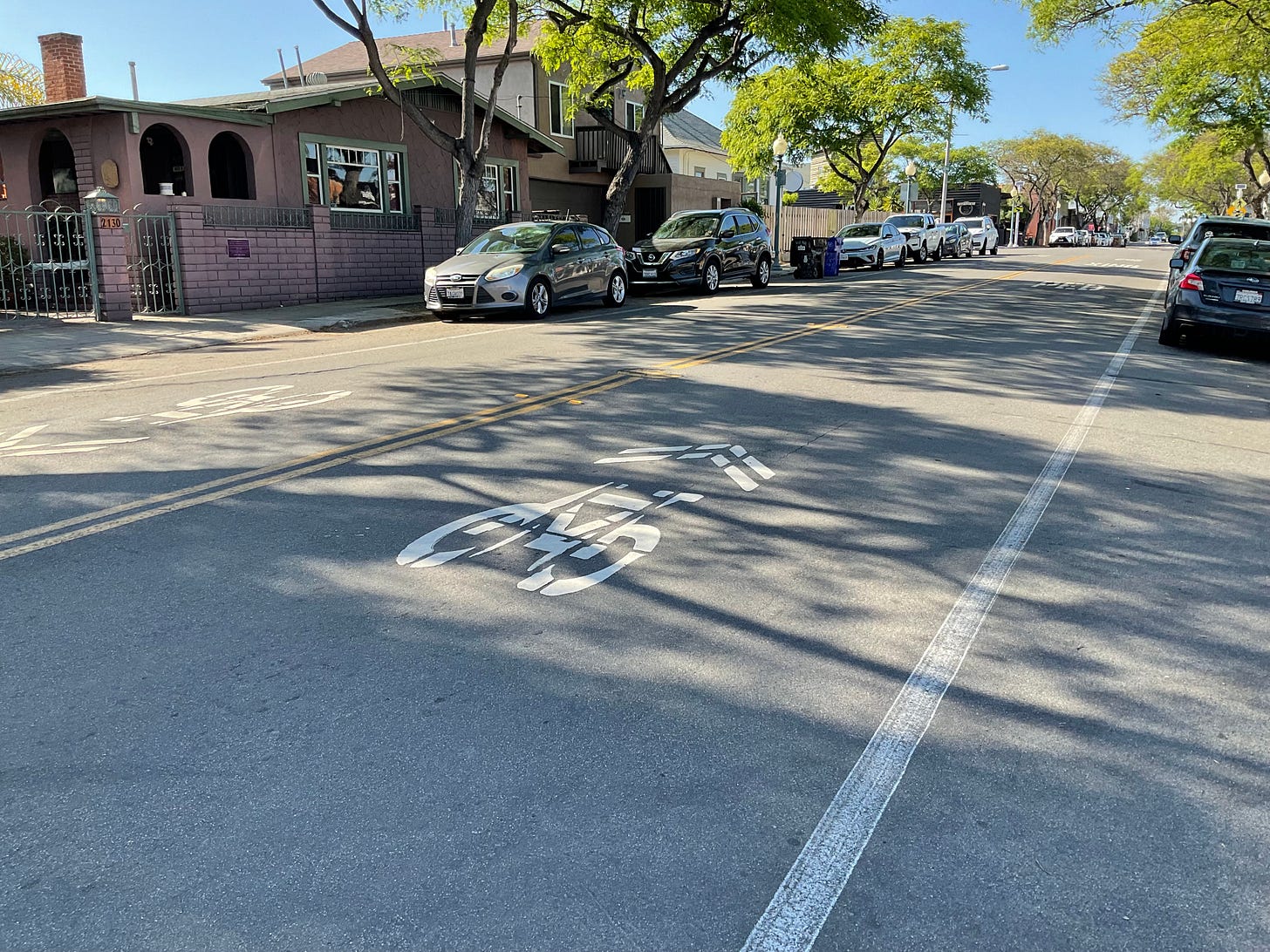
Below is a map showing the bike routes throughout downtown San Diego and surrounding neighborhoods. The lanes are color coded to indicate how well-separated a bike lane is from other traffic, or whether pedestrians have access to the bike lane. Yellow and blue lanes are the least separated, while the ones marked in red, orange, and green can be set off by curbs or parked vehicles, giving a great amount of protection to cyclists. The second map is a closer view of my neighborhood of South Park. The left portion of the map includes Balboa Park and the San Diego Zoo.
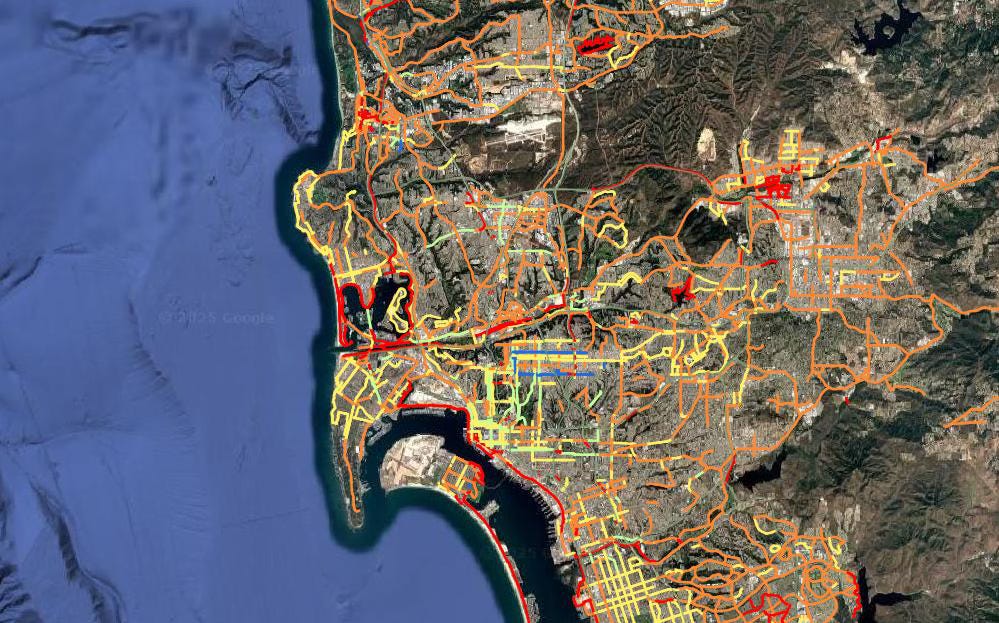
As you can see, there are lots of bike lanes. As well, the amount of separateness and protection can change as a cyclist peddles down the street.
Below are bike lanes that protect cyclists. Many of the new lanes are quite pleasant and promise to become even more charming and enjoyable in coming years.
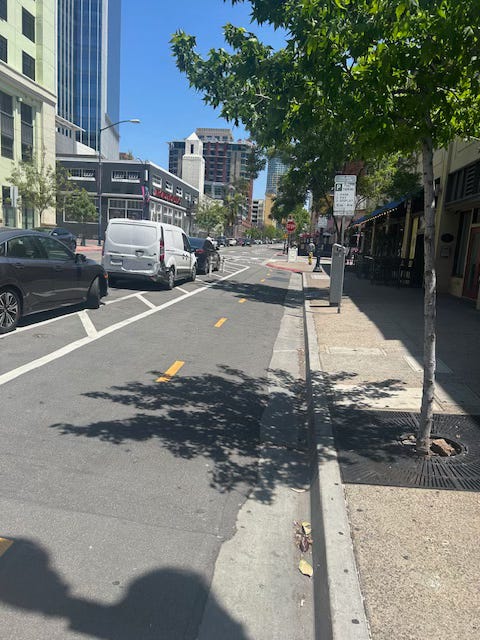
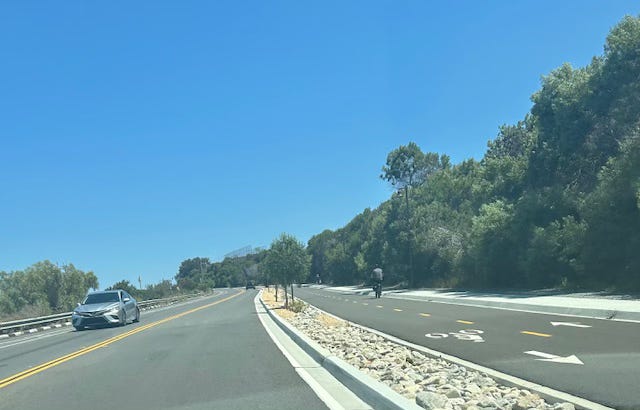
Now, knowing I can cycle safely through all of San Diego, I’m hoping the added push of an electric bike helps me with those challenging hills! Research has shown that I am not alone. For the majority of cyclists, safety is a big factor in whether or not they chose to travel by bike or by other means.
More cyclists and e-cyclists can be a big part of reducing our emissions. As I wrote before, in August of 2022, electric bicycles can be great tools for lowering our carbon output:
According to a 2016 report from the European Cyclists’ Federation, e-bikes are almost as climate friendly as regular bikes, emitting over their entire lifecycle just a tad more carbon than the use of a regular bike. Over its lifecycle, riding a regular bike emits about 33.4 grams of CO2 per mile. Besides the manufacture of the bike, this figure includes the carbon footprint of the extra food needed to pedal a bike. By comparison, even including the carbon from charging the battery, an e-bike emits 35.2 grams of CO2 per mile, just 1.8 grams more. Though hard to believe, this means e-bikes could in some cases have a smaller carbon footprint than walking. By comparison, cars emit about 347 grams of CO2 per mile, about ten times as much as an e-bike.
Do you plan to get or already have an e-bike? Ride it much? Does your city have designated cycling lanes? What could get you to cycle more?
Previous Green Dispatches on cycling:
Is bike sharing reducing carbon emissions? April 18 2022
Is an e-bike in your future? August 12 2022
Get on your bikes and ride! September 22, 2023
Ride that e-bike for fun, health, and a better world March 8, 2024




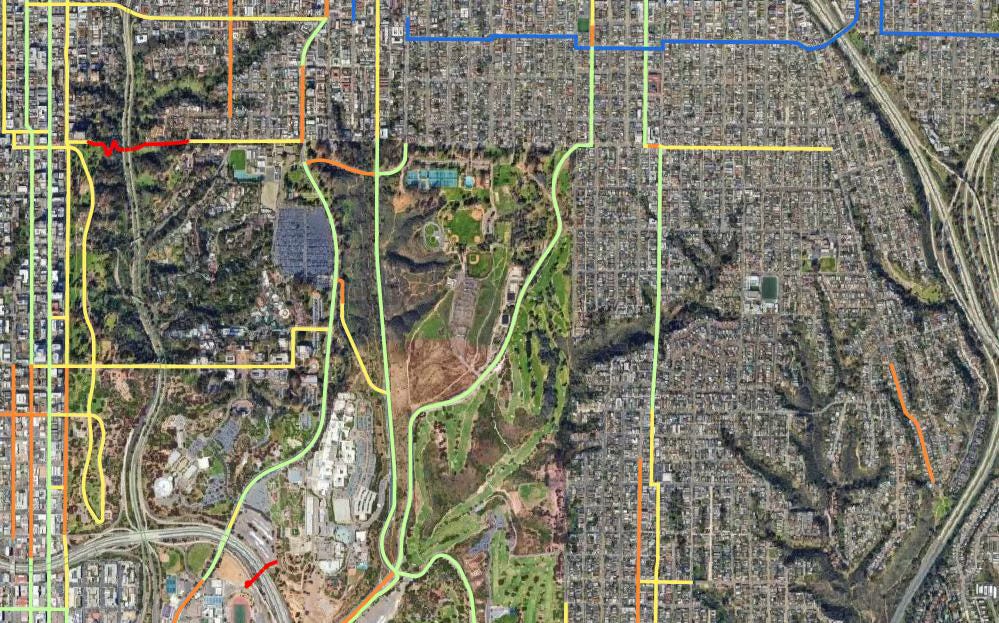
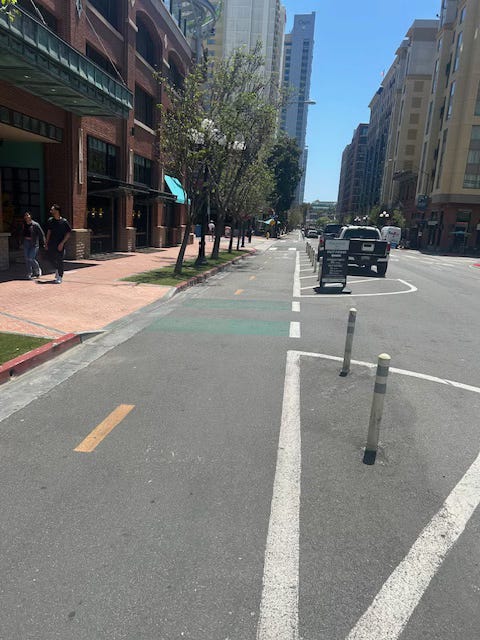

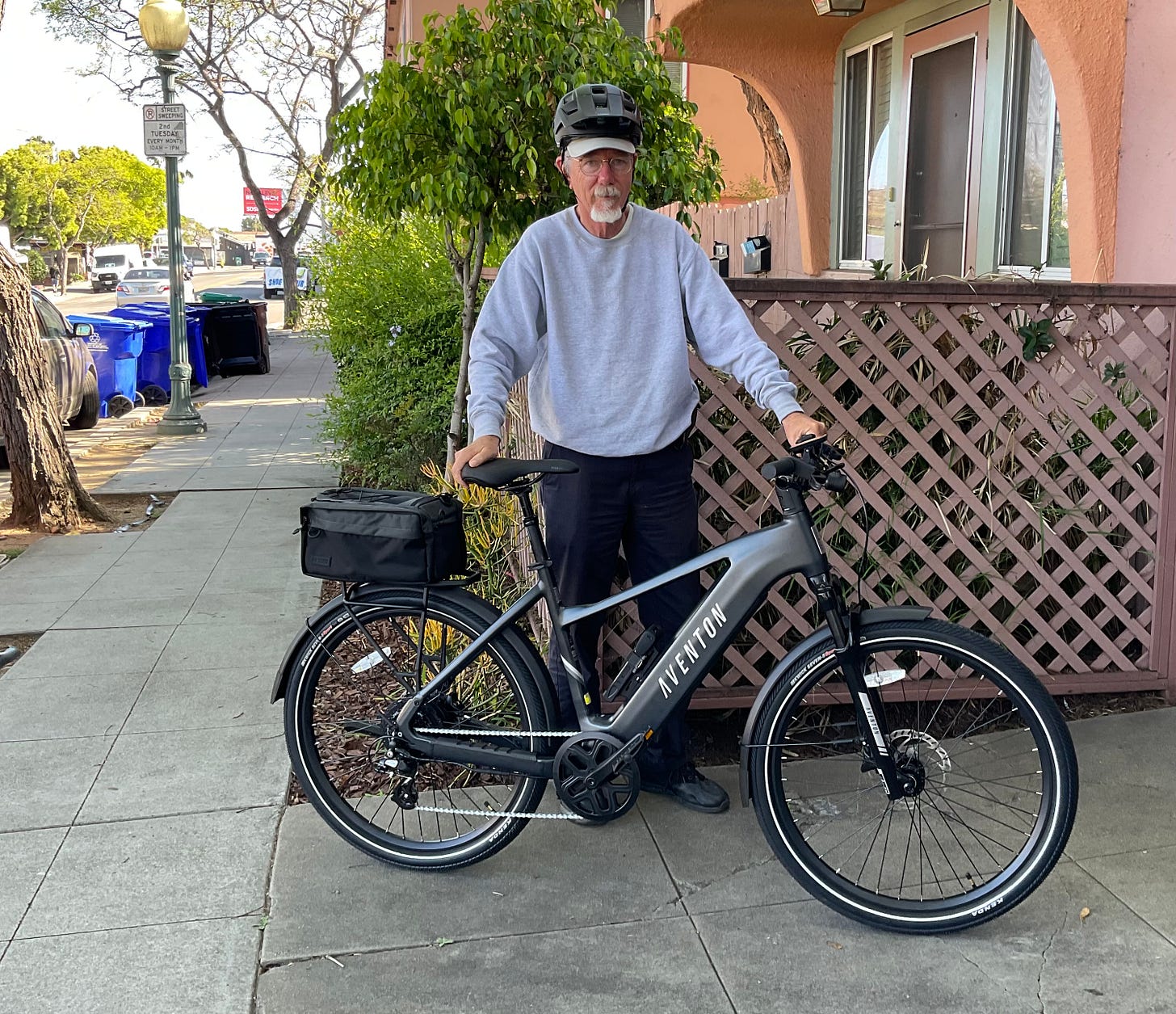
Love this! I agree safety is a huge concern for cyclists, and as someone who lives at the bottom of a hill, I'm always opting for an e-bike over a traditional one when I have to go north. More protected bike lanes (not just lines of paint) help tackle the first problem, and my city's bikeshare program, which offers both traditional bikes and e-bikes, has been great for the second.
Have you considered a motor bike? I recently have bought a Tracker from CCM https://www.ccm-motorcycles.com/ and love it. I recommend if you enjoy it!!